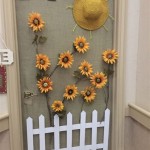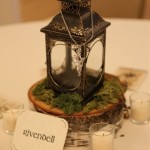How To Decorate a Front Sitting Room: Walls Ideas
The front sitting room, often the first space encountered within a home, presents a significant opportunity to establish the overall aesthetic and atmosphere. Decorating the walls of this room is crucial, as they serve as a backdrop for furniture, artwork, and other decorative elements, ultimately influencing the perceived size, light, and mood of the space. Thoughtful wall decoration can transform a plain room into a welcoming and stylish area that reflects the homeowner's personality and lifestyle. Considering various factors, including room size, natural light, existing furnishings, and preferred style, is essential for selecting the most appropriate wall decorating ideas.
The process of decorating front sitting room walls involves a multifaceted approach, encompassing color selection, material choice, and the incorporation of decorative features. The aim is to create a cohesive and visually appealing environment that enhances the overall functionality and aesthetic value of the room. This article explores various wall decoration ideas, providing practical guidance on how to effectively transform the front sitting room into a captivating and inviting space.
Color Palette Considerations
The selection of a color palette is arguably the most impactful decision when decorating walls. Color profoundly affects the perceived size and mood of a room. Lighter colors, such as whites, creams, and pale pastels, tend to create an airy and spacious feel, reflecting light and visually expanding the room. These colors are particularly suitable for smaller front sitting rooms with limited natural light.
Conversely, darker colors, such as deep blues, grays, and greens, can add depth and drama to a room. However, they should be used judiciously, as they can make a small room feel even smaller and darker. In larger, well-lit front sitting rooms, darker colors can create a sense of sophistication and intimacy. Accent walls, featuring a darker or bolder color, can be used to highlight specific architectural features or to create a focal point within the room.
Neutral colors, such as grays, beiges, and taupes, offer a versatile backdrop that complements a wide range of furniture and decor styles. Neutral walls provide a calming and sophisticated foundation, allowing for the introduction of color through accessories, artwork, and textiles. These colors are particularly useful when a homeowner desires flexibility in changing the room's overall aesthetic over time.
Beyond the basic considerations of light and space, the chosen color palette should also align with the homeowner's personal preferences and the overall style of the home. Consider the existing furniture and decor when selecting wall colors to ensure a cohesive and harmonious look. Color swatches should be tested in the room under different lighting conditions to assess how the colors appear at various times of the day.
Material Choices and Textural Elements
Beyond color, the material used to finish the walls plays a significant role in the overall aesthetic of the front sitting room. Paint is the most common and versatile option, offering a wide range of colors, finishes, and application techniques. Different paint finishes, such as matte, eggshell, satin, and gloss, offer varying degrees of sheen and durability. Matte finishes are ideal for hiding imperfections, while gloss finishes are more durable and easier to clean.
Wallpaper provides an opportunity to introduce patterns, textures, and visual interest to the walls. Wallpaper comes in a vast array of designs, from traditional florals and stripes to contemporary geometric patterns and abstract designs. Textured wallpaper can add depth and dimension to the walls, creating a tactile element that enhances the overall sensory experience of the room. When selecting wallpaper, it is important to consider the scale of the pattern in relation to the size of the room. Smaller patterns are generally more suitable for smaller rooms, while larger patterns can be used effectively in larger spaces.
Wood paneling is a classic wall treatment that can add warmth and character to a front sitting room. Wood paneling can range from simple wainscoting to elaborate raised-panel designs. Painted or stained wood paneling can create a sophisticated and timeless look. Stone or brick veneer can also be used to create a rustic or industrial-chic aesthetic. These materials can be applied to an entire wall or used as an accent feature to highlight a fireplace or other architectural element.
Beyond traditional wall finishes, consider alternative materials such as fabric panels, corkboard, or even metal sheeting. Fabric panels can add softness and texture to the walls, while corkboard can provide a functional surface for displaying artwork, photos, or notes. Metal sheeting can create a sleek and modern look, particularly in contemporary spaces.
Incorporating Decorative Features
Once the color and material of the walls have been determined, the next step is to consider incorporating decorative features that enhance the overall aesthetic and functionality of the front sitting room. Artwork is a fundamental element of wall decoration, providing an opportunity to express personal taste and to create a focal point within the room. The size and style of the artwork should be proportionate to the size of the wall and should complement the overall decor of the room.
Mirrors are another effective way to decorate walls, particularly in smaller or darker front sitting rooms. Mirrors reflect light and create the illusion of more space, making the room feel brighter and more open. A large statement mirror can serve as a focal point, while smaller mirrors can be used to add visual interest and to reflect specific architectural features. Consider the placement of mirrors carefully to maximize their impact. Positioning a mirror opposite a window can bring more natural light into the room.
Shelving units provide both decorative and functional storage. Floating shelves can create a minimalist and modern look, while built-in shelving units can provide ample storage for books, decorative objects, and other personal items. Shelves can be used to display artwork, plants, or other decorative elements, adding visual interest to the walls. The arrangement of items on the shelves should be balanced and visually appealing.
Other decorative features to consider include wall sconces, which can provide ambient lighting and add visual interest to the walls. Wall decals or stencils can be used to create unique patterns and designs. Picture rails can be installed to display artwork without damaging the walls. The key is to select decorative features that complement the overall style of the room and reflect the homeowner's personal taste.
Ultimately, successful wall decoration in a front sitting room requires careful consideration of color, material, and decorative features. By thoughtfully selecting these elements, homeowners can create a welcoming and stylish space that reflects their personality and enhances the overall functionality and aesthetic value of their home. The front sitting room, as the initial point of contact, should evoke a sense of comfort and style, setting the tone for the rest of the living space.

80 Gorgeous Living Room Decorating Ideas For Every Style

80 Gorgeous Living Room Decorating Ideas For Every Style

Small Living Room Ideas Decorating

4 Need To Know Tips For Decorating A Small Space

Living Room Spring Decor Ideas Front Thrifty And Chic

50 Style Modern Living Room Ideas To Try In 2025

Moody And Bright Living Room Lantern Lane Designs

Living Room Inspiration Design Ideas Farrow Ball

How To Decorate A Small Living Room Houzz

Vintage Cottage Spring Living Room Front Tour 2025 Thrifty And Chic







